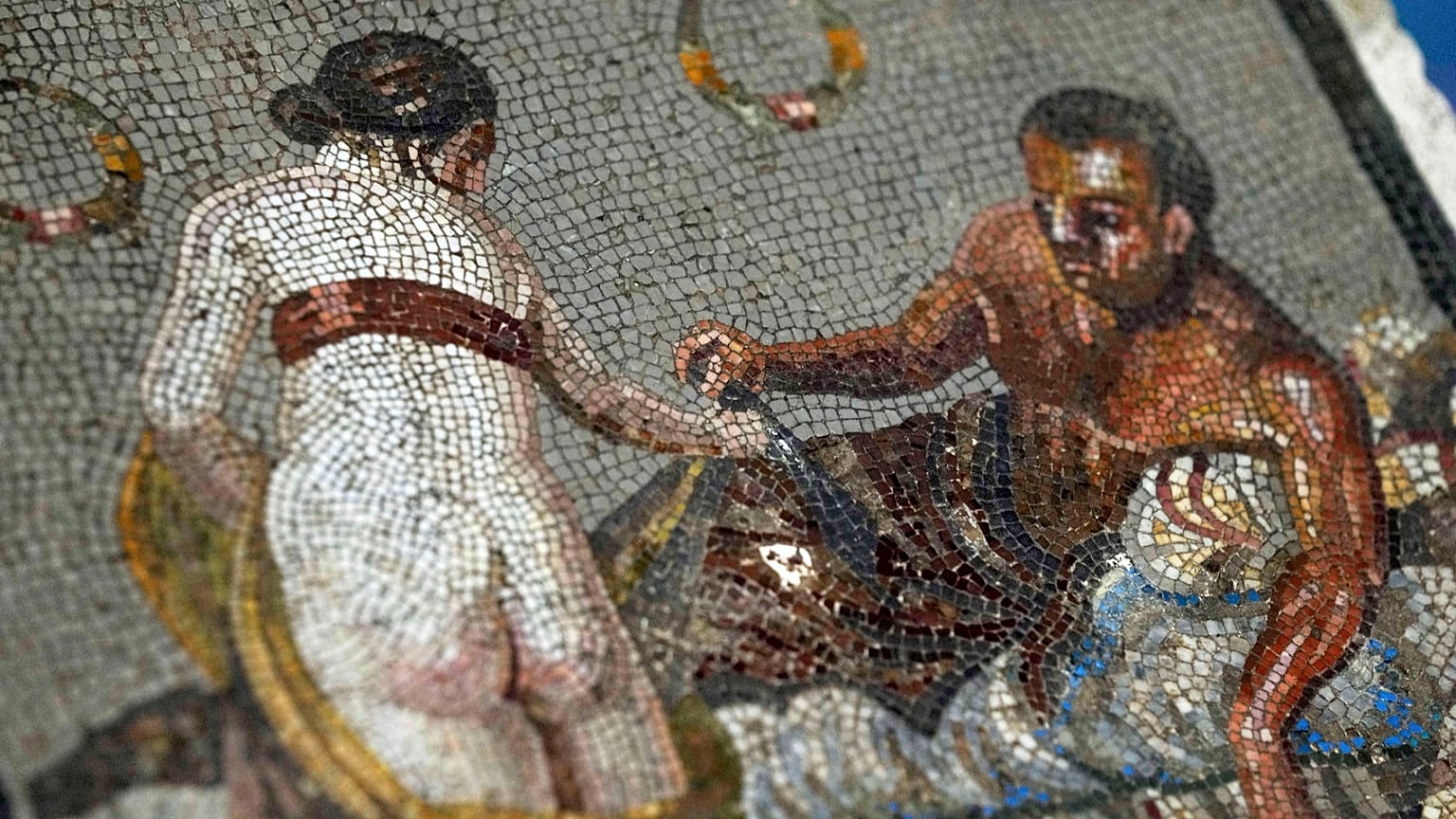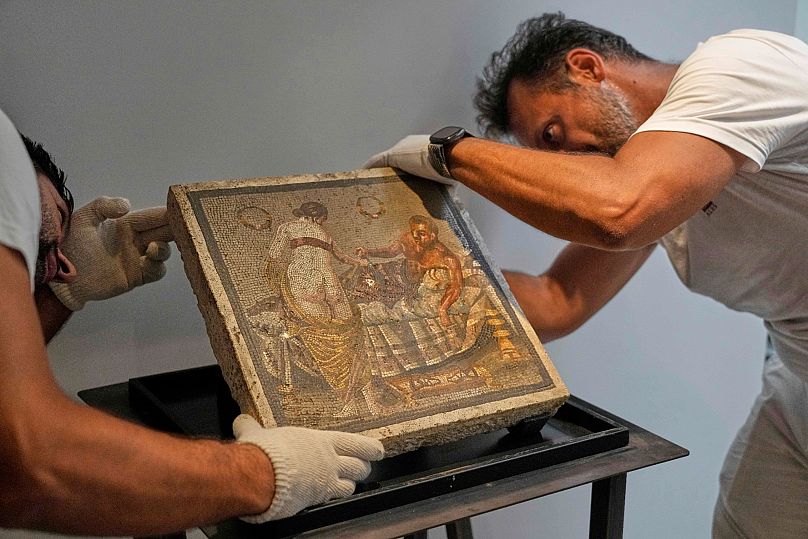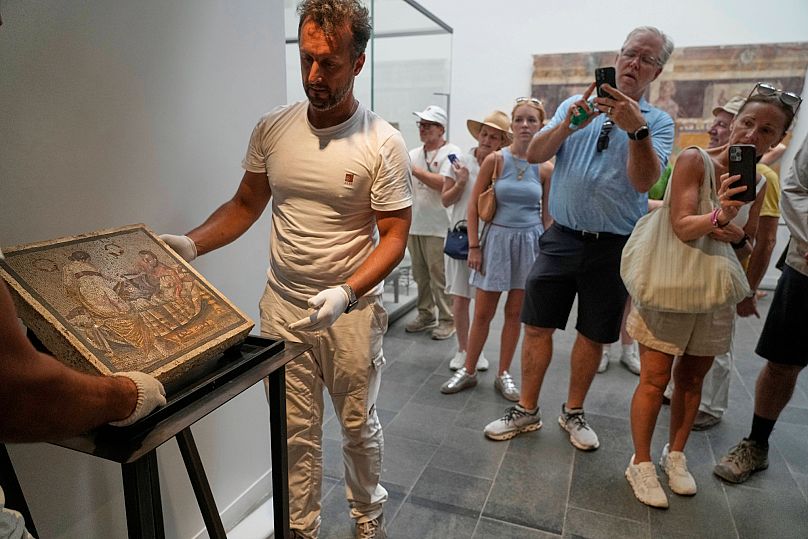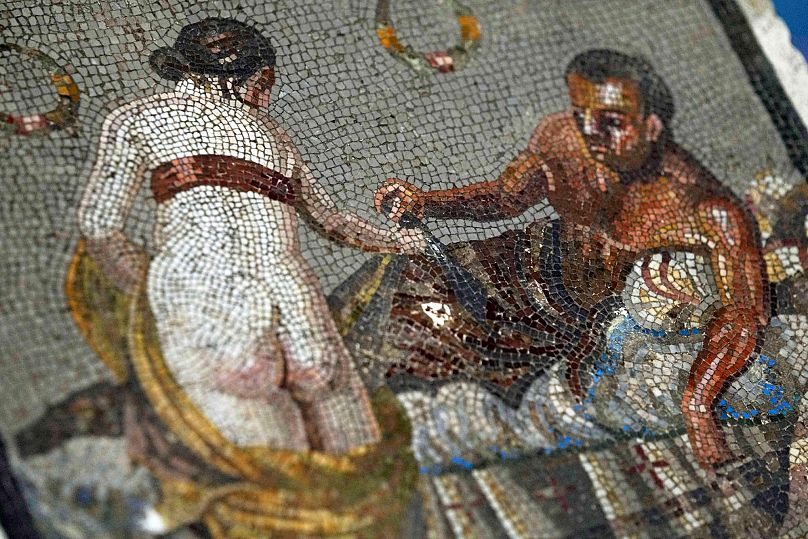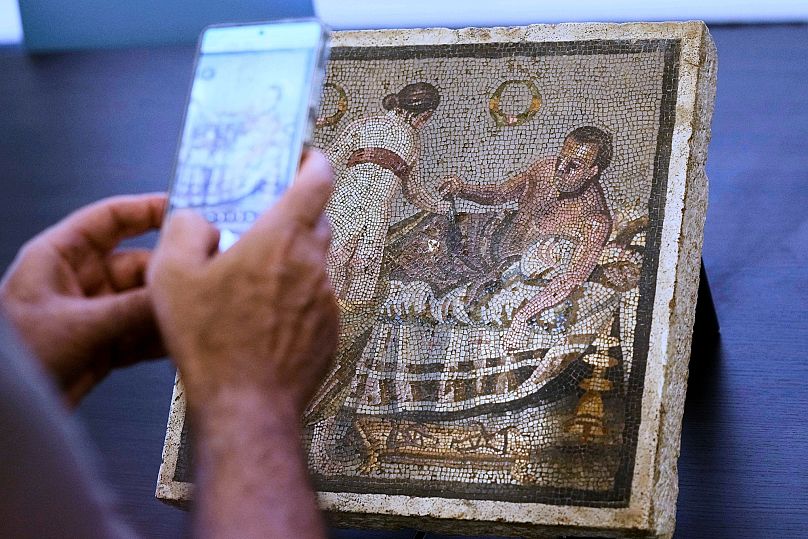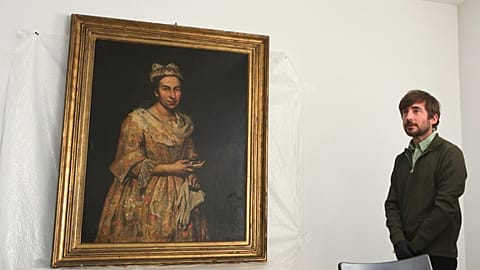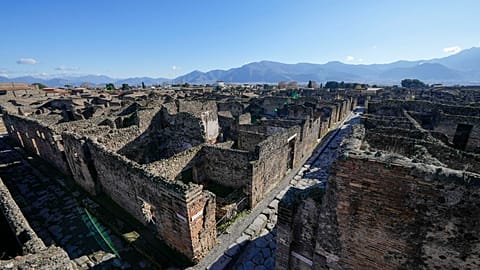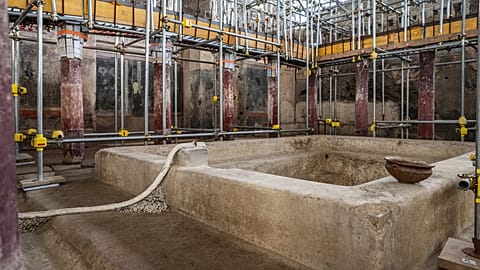The mosaic - dating between mid- to last century B.C. and the first century - stolen by a Nazi German captain and is considered a work of “extraordinary cultural interest.”
An erotic-themed mosaic from the Roman era was returned to the Archaeological Park of Pompeii on Tuesday, after being stolen by a Nazi German captain during World War II.
The artwork was repatriated from Germany through diplomatic channels. It was arranged by the Italian Consulate in Stuttgart having been returned from the heirs of the last owner, a deceased German citizen.
The owner had received the mosaic as a gift from a Wehrmacht captain, assigned to the military supply chain in Italy during the war.
The heirs of the mosaic's last owner in Germany contacted the Carabinieri unit in Rome that's dedicated to protecting cultural heritage, which was in charge of the investigation, asking for information on how to return the mosaic to the Italian state. Authorities carried out the necessary checks to establish its authenticity and provenance, and then worked to repatriate the mosaic in September 2023.
The mosaic - dating between mid- to last century B.C. and the first century - is considered a work of “extraordinary cultural interest.”
“It is the moment when the theme of domestic love becomes an artistic subject,” said Gabriel Zuchtriegel, director of the Archaeological Park of Pompeii and co-author of an essay dedicated to the returned work.
“While the Hellenistic period, from the fourth to the first century B.C., exulted the passion of mythological and heroic figures, now we see a new theme."
The collaboration with the Archaeological Park of Pompeii was also key, as it made it possible to trace it to near the Mount Vesuvius volcano, despite the scarcity of data on the original context of its discovery, the Carabinieri said.
“Today’s return is like healing an open wound,” Zuchtriegel said, adding that the mosaic allows to reconstruct the story of that period, the first century A.D., before Pompeii was destroyed by the Vesuvius eruption in A.D. 79.
The park’s director also highlighted how the return by the heirs of its owner signals an important change in “mentality,” as “the sense of possession (of stolen art) becomes a heavy burden” - referring to the so-called “Pompeii curse,” which according to a popular superstition hits whoever steals artifacts in Pompeii.
“We see that often in the many letters we receive from people who may have stolen just a stone, to bring home a piece of Pompeii.”















